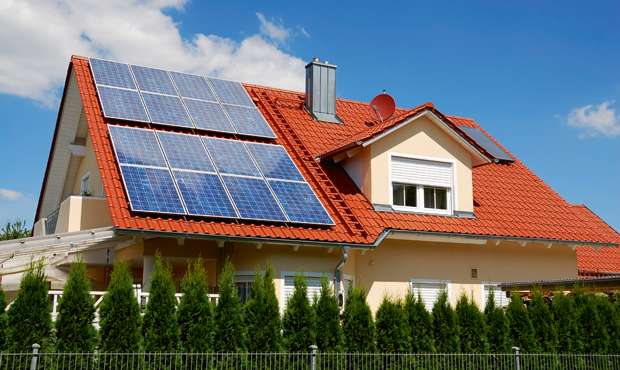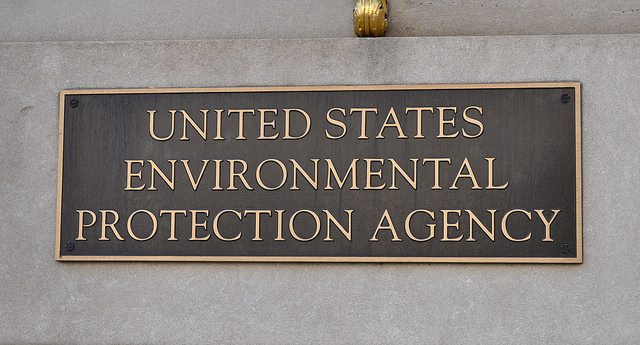US Homes Dazzle with Solar Panelled Roofs. As wars are being fought between nations over oil, the US government grants for solar panels for your home have set a new trend in the country.
Solar panels generate power from solar energy which is renewable, clean and non-pollutant. Solar energy, once generated, can then be used to produce electricity, heat water and also your homes. The system is easy to set up and you don’t need to spend that extra money hiring anyone to install it.
Oil is a fossil fuel which is fast depleting, overuse of which led to and global warming, and whose cost is burgeoning. Governments are now encouraging its citizens to shift to renewable sources of energy. Solar power-driven households generate much lesser pollution and carbon footprint.
As part of this initiative, government grants, which expire in 2016, are important since the initial installation costs of solar panels are quite high. Grants offset this expense, making it affordable and appealing to more and more households. They are the financial incentive for homeowners to invest in the technology.
Why Installing Solar Panelled Roofs?
The federal government gives a tax credit of up to 30 percent of the costs for installing solar electric systems. So if a citizen is liable to pay $1000 in taxes and has earned a $300 credit, he needs to pay only $700. However, he has to meet few criteria – minimum 0.5 kW fuel cells, panels must have efficiency of at least 30 percent, and 50 percent or more of the home’s heating must be via solar energy.
As part of the federal grants program, the Department of Energy’s Tribal Energy Program (https://www.energy.gov/eere/office-energy-efficiency-renewable-energy) is also a boon for tribal homes. It educates homeowners on tribal land about using renewable energy to reach energy sufficiency.
Requirements
The homeowner must install a new solar power-generating system before applying for the federal credit. There is no grant for installation of used panels. However, not only house owners, condo and co-op owners are eligible for this credit too. However, those living in rented accommodation are excluded from the exemption.
First submit IRS Form 5695 (instructions included), a worksheet which is used to calculate the tax credit one is applicable for. Submit your income tax sheet with the form. Then, the calculated credit amount is mentioned in line 52 of IRS form 1040. The entire process in to be done online and remember to save all your bills and invoices. The government claims to review and pay the grant within 60 days via wire transfers.
Paneled Roofs Grants for Homeowners
Other than this, there are grants for homeowners in rural areas and those under Housing Recovery Act (http://en.wikipedia.org/wiki/Housing_and_Economic_Recovery_Act_of_2008). Such programs have different criteria from the federal scheme. However, don’t restrict yourself to applying for only the federal credit.
Every state offers some incentives, which vary in degrees. For more specific information about your area, you can visit the Database of State Incentives for Renewable Energy (DSIRE – http://www.dsireusa.org/) and figure out the local and state-level programs.
With such financial backing from the government, solar panels are coming up fast on homeowners’ roofs as more and more people opt for such grants. Most see this an opportunity to earn the tax credit, but for those worried about global warming and pollution, an incentive to encourage usage of renewable energy is a welcome move.
How Many Houses With Paneled Roofs in U.S in 2024?
In the United States, here are the data about how many houses using paneled roofs in the 2024 based on locations:
California
California leads the way with an impressive 1.8 million homes equipped with solar panels. This number is nearly ten times higher than Arizona, the state with the second-highest number of solar installations. California’s leadership in solar energy is due to its once-supportive policies, significant financial investments, and a climate that is perfect for harnessing solar power. However, recent changes in policy have slowed the growth of solar energy in the state as of 2024.
Arizona
Arizona comes in second with over 290,000 homes powered by solar energy. The state’s abundant sunshine makes it an ideal location for solar power, and its commitment to expanding solar capacity has made it a national leader in this area. Arizona’s success shows how effective solar energy can be in regions with plenty of sunlight.
New York
New York, although not as sunny as some other states, ranks third in solar installations. The state has ambitious renewable energy goals and strong incentives for adopting solar power. Despite its diverse climate, New York’s efforts to increase solar usage prove that solar energy can be successfully implemented in various geographical areas.
Florida
Florida, known as the “Sunshine State,” naturally ranks among the top states for solar energy. Favorable weather, supportive policies, and growing investments in solar technology have helped Florida tap into its vast solar potential.
New Jersey
New Jersey might come as a surprise to some, but it has earned its place as a top solar state. With one of the most aggressive solar renewable energy certificate (SREC) markets and strong state policies, New Jersey has made significant progress in both residential and commercial solar installations.
Massachusetts
Massachusetts has become a leader in solar energy through its innovative policies and incentive programs. Even though the state doesn’t have the best solar conditions, its commitment to renewable energy has led to substantial growth in solar installations.
Colorado
Colorado’s beautiful landscapes are complemented by its achievements in solar energy. The state’s strong environmental focus and plentiful sunshine have led to significant investments in solar power, making Colorado a key player in the solar industry.
Nevada
Nevada’s vast deserts are now home to numerous solar energy projects. The state’s dedication to renewable energy is evident in its rapid growth of solar installations, driven by both large-scale projects and residential systems.
Maryland
Maryland has made a name for itself on the East Coast through strategic initiatives promoting solar energy. The state’s renewable energy portfolio standard (RPS) and tax incentives have driven remarkable growth in solar installations, making solar power increasingly common in Maryland.
Hawaii
Finally, Hawaii’s unique island environment and high electricity costs make it a perfect fit for solar energy. The state has pursued solar energy aggressively, achieving one of the highest rates of solar installations per person in the country. Hawaii’s success underscores the importance of solar power in achieving energy independence and sustainability.
Other States
Across the United States, several states are making significant strides in adopting solar energy. So, each bringing unique strengths and strategies to the table. Utah and Texas, blessed with plenty of sunshine, are rapidly increasing their solar energy capacity through both residential installations and large utility-scale projects. These states are taking full advantage of their sunny climates to expand their solar footprint.
In states like Pennsylvania and Illinois, supportive government policies are playing a key role in the growth of solar energy. These states are focusing on diversifying their energy sources, with solar power becoming an increasingly important part of their energy mix.
New Mexico and Virginia are also emerging as leaders in solar energy, particularly in the Southwest and Southeast regions. These states are pursuing ambitious solar projects, supported by favorable policies that encourage the development of solar power.
North Carolina has made significant investments in solar farms, establishing itself as a regional leader in solar energy. Despite having fewer sunny days, Oregon and Washington are overcoming this challenge with innovative technologies and programs. The goal is to enhance the efficiency of their solar systems.
These efforts, along with Connecticut’s ongoing push for residential and community solar projects, demonstrate a strong national commitment to solar energy. This widespread adoption highlights the crucial role that solar power is playing in America’s transition toward renewable energy sources.
US Homes Dazzle with Solar Panelled Roofs: Data Percentage
In 2024, the United States reached a significant milestone in solar energy adoption. Well, there are 4.2 million single-family homes, out of 84.69 million eligible homes, now equipped with solar panels. This accounts for about 4.96% of all single-family homes nationwide.
While 4.96% may seem like a small figure, it actually represents substantial progress in the country’s move toward renewable energy. This growing percentage highlights how more American households are embracing solar power, driven by the increasing availability and affordability of solar technology. It also reflects a rising awareness of the environmental and financial benefits that solar energy offers. Thus, showing a strong trend toward sustainability and energy independence.
How Many Installed Solar Panels in US
As of 2024, approximately 4.2 million homes in the United States have solar panels installed. With each home typically having between 25 to 30 panels. In another word, there are an estimated 105 to 126 million solar panels on residential rooftops across the country.
This large number underscores the significant role that residential solar energy is playing in the nation’s overall energy landscape, reflecting the growing adoption of renewable energy in American households.
US Homes Dazzle with Solar Panelled Roofs: Summary
In conclusion, US Homes Dazzle with Solar Panelled Roofs has achieved a major milestone in 2024. So far, there are 4.2 million homes now equipped with solar systems, resulting in an estimated 105 to 126 million solar panels installed across the country.
This impressive accomplishment reflects the growing commitment of individual homeowners to sustainability and energy independence. It also represents a crucial step forward in the nation’s shift towards green energy. Each solar panel installed brings the U.S. closer to its goal of a renewable energy-driven future. This is a powerful example for the world in the transition to a cleaner and more resilient energy system.
See Also: Can I Get a Government Grant for a New Roof
Source:
- (https://www.solarinsure.com/how-many-americans-have-solar-panels)




